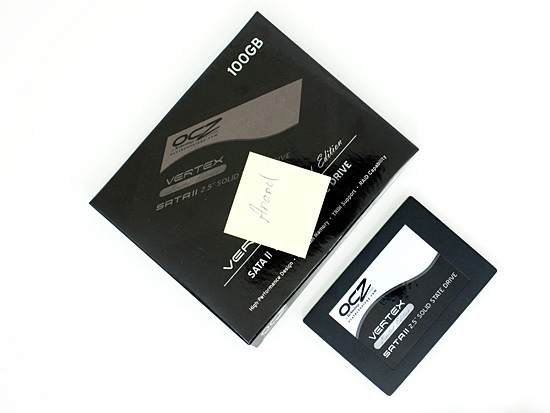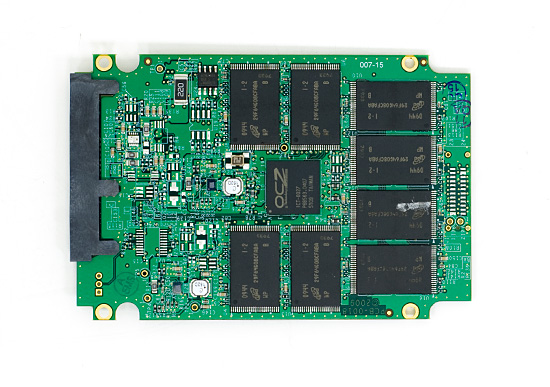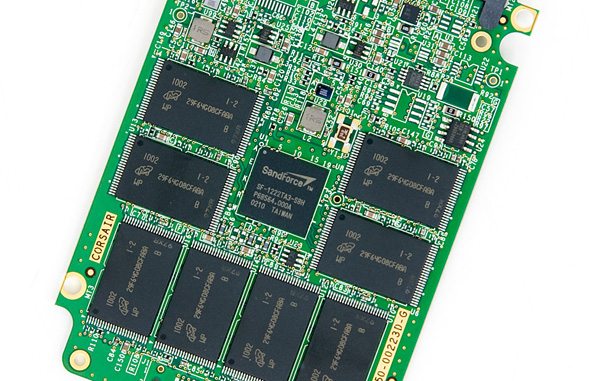Understanding SandForce's SF-1200 & SF-1500, Not All Drives are Equal
by Anand Lal Shimpi on April 16, 2010 11:30 AM ESTLess than 24 hours ago I was called into a meeting with SandForce, the SSD controller manufacturer that has been on fire lately. The company makes two controllers: the SF-1200 and SF-1500. The meeting was initiated by SandForce to clear up any misconceptions I might have about the differences between the two controllers. No good deed goes unpunished, and the quick meeting turned into an hour long debate about responsibility and ethics. It turns out that while I finally know the difference between the SF-1200 and the more expensive SF-1500, not all drives based on the SF-1200 will offer the same performance. In fact, some drives that are currently on the market will actually drop in performance (in one metric) if you upgrade them to SF’s mass production firmware. Yep.

SF-1200 vs. SF-1500
On SandForce’s site are two controller options: the SF-1500 intended for enterprise (server) customers, and the SF-1200 for client (desktop/notebook) SSDs. The first silicon ready was SF-1500, and a derivative version of that was used in the earliest drives (e.g. OCZ’s Vertex Limited Edition). More recently however we’ve seen SF-1200 based SSDs crop up, such as Corsair’s Force drive. In our recent review we found no performance difference between the Force drive and the Vertex LE, leading me to believe that there’s no tangible performance difference between the SF-1200 and SF-1500. However since then I’ve finally got a good handle on the differences directly from SandForce.

The SF-1500 controller from the original Vertex LE.
Let’s start with the obvious and what I suspected: there is no physical difference between the SF-1200 and SF-1500. It’s the same die. The difference between the two amounts to firmware, validation and settings on the chips themselves. It’s akin to Intel disabling Hyper Threading on the Core i5 750 but leaving it enabled on the Core i7 860; same die, different features.

The SF-1200 controller on Corsair's Force SSD. The chips are the same, it's all about firmware and settings.
As an enterprise class solution, the SF-1500 is designed to complete any writes in progress in the event of sudden power loss. The SF-1500 firmware is configured expecting the presence of the super cap we saw in the Vertex 2 Pro. As such it expects that it can write at full speed without any worries about power loss. In other words, it assumes you have power failure protection at the drive level.
The SF-1200 firmware on the other hand doesn’t assume the presence of a large capacitor to keep the controller/NAND powered long enough to complete all writes in the event of a power failure. As such it does more frequent check pointing and doesn’t guarantee the write in progress will complete before it’s acknowledged. It’s a subtle difference, but the SF-1500 with super cap may be necessary for some of SandForce’s enterprise customers.

The SF-1500's super cap, necessary because SandForce's controller keeps a couple of MBs of data buffered
Continuing the enterprise focus, the SF-1500 supports more SMART attributes and logging/debug/diagnostic features. SandForce wasn’t willing to elaborate on this point but said that it shares the SMART feature list with its customers under NDA. If this sort of thing might matter to you, sign a NDA with SandForce and they’ll apparently tell all.
As I pointed out in the Corsair Force review, SandForce rates the SF-1500 for a longer mean time to failure than the SF-1200. This is a basic binning/testing advantage. The SF-1500 goes through more tests and qualification than the SF-1200 allowing SandForce to guarantee higher reliability. That’s not to say that the SF-1200 won’t last as long as or longer than the SF-1500, it’s just that SandForce is willing to guarantee a longer lifespan on the SF-1500 than it is willing to do for the SF-1200. I poked fun at SF’s mean time to failure ratings in the Force review, however SandForce explained the MTTF is calculated across the entire population of controllers - not the lifespan of a single controller.
In a population of 10,000,000 controllers, with a rating of 10,000,000 hours, the probability is that 1 unit would fail in an hour. The SF-1200 would have 5 units fail in the same time. The failure probability drops as the number of controllers drops (SF won’t be shipping anywhere near 10M of these things).
While both the SF-1200 and SF-1500 support MLC NAND, the SF-1500 also supports SLC. This once again is more of an enterprise class feature as most desktop users aren’t willing to pay the 2x price premium of SLC vs. MLC NAND flash.
| SandForce Controller Comparison | ||||
| SF-1200 | SF-1500 | |||
| Flash Memory Support | MLC | MLC or SLC | ||
| Power Consumption | 550 mW (typical) | 950 mW (typical) | ||
| Sequential Read/Write Performance (128KB) | 260 MB/s | 260 MB/s | ||
| Random Read/Write Performance (4K) | 30K/10K IOPS | 30K/30K IOPS | ||
| Security | 128-bit AES Data Encryption, Optional Disk Password | 128-bit AES Data Encryption, User Selectable Encryption Key | ||
| Unrecoverable Read Errors | Less than 1 sector per 1016 bits read | Less than 1 sector per 1017 bits read | ||
| MTTF | 2,000,000 operating hours | 10,000,000 operating hours | ||
| Reliability | 5 year customer life cycle | 5 year enterprise life cycle | ||
So far none of these differences matter to a client user, but the last item on the list does. There’s a performance difference between the SF-1200 and SF-1500. The SF-1500 is capable of higher sustained small file random write speed. The SF-1200 is rated at 10,000 4K random write IOPS (sustained), while the SF-1500 is rated at 30K (sustained). This is purely a firmware limitation, but SandForce believes the 10K number is high enough for client PCs (Intel rates its X25-M G2 at 6.6K for the 80GB model and 8.6K for the 160GB model).
The controllers should otherwise perform the same, it’s only in small file random writes that there’s a difference (realistically speaking we’re talking random writes smaller than 16KB in size). SandForce notes the difference on its website, however in our testing of Corsair’s Force drive we showed absolutely no difference. So what’s going on?










81 Comments
View All Comments
Crypticone - Friday, April 16, 2010 - link
Remember this is the same company that asked reviewers to NOT open the product. They started out with one product, got it reviewed favorably then switched to a lesser and much less expensive chip and left prices and model numbers the same.If that is not bait and switch in your mind, I am not sure what is..
ggathagan - Friday, April 16, 2010 - link
After re-reading willscary's comment, I have to agree that I was wrong on the bait-and-switch aspect of it.If OWC had sent an email stating that there had been a spec change and asking if the drives were still desired, that would be one thing.
Since they were not upfront with the change to customers who had already purchased, but had not yet received their drives, you are correct; clearly duplicitous.
529th - Friday, April 16, 2010 - link
So, Corsair found that a power saving feature on the Sandforce controllers was the culprit to it's reliability stigma?Then they went ahead and fixed it with their own firmware thus negating the "MP" released by Sandforce thereby maintaining Vertex 2 like performance?
My main concern is for my 2 OCZ Vertex LE SSD drives. One in the machine I have now: firmware 1.0; and on that should be delivered the 19th. So, if Sandforce borrows the idea from Corsair, if indeed that is the reliability problem, then the next time you put the OCZ Vertex LE on the 2mb power consumption it should relatively read the same as the Corsair Force 100 (Sandforce 1200) SSD drive right? Anand, could you do that for us? Thanks
529th
Anand Lal Shimpi - Friday, April 16, 2010 - link
I'm not sure what the 3.0.5 fix is for the power state bug. I've been meaning to put that fw on my Vertex LE but haven't had the opportunity to yet. As soon as I do, I will let you know :)In light of all of these issues, both drives with their latest firmware will be going in mission critical systems in my office. Gonna try and break em :)
Take care,
Anand
GullLars - Saturday, April 17, 2010 - link
Putting them into mission critical systems in order to try to break them... Sounds kind of reckless if the systems are indeed mission critical. If they are riggs that simulate servers/workstations that typically require mission critical storage, it would be an entirely different scenario.Great reporting on this kind of stuff BTW, keep it up ;)
It makes me kind of sad to see this kind of sketchy an unorganized behaviour from a company that seems to have great engineering skills. I've been impressed with their tech and architecture since they came out of stealth mode last spring, and the benchmarks didn't disappoint (only the price tag :P). IMO they should not cripple the drives if it's not neccesary due to the lack of the supercap, and even then, providing the full performance FW to enthusiasts willing to take the risk of dataloss would be a good idea to gain goodwill.
I hope manifacturers will provide enthusiasts with the 3.0.1 FW with the power savings feature disabled (modded FW), even if they decide to go for the reduced performance MP FW SF-1200 drives off the shelves.
nycromes - Friday, April 16, 2010 - link
Anand,I was highly critical of you in another review the other day. That being said, articles like this are what I have come to expect from Anandtech. In depth explanations of what is going on with new tech, and as evidenced here, sometimes what is going on in the business as well. Thanks for digging deeper into this situation and letting us all in on what is going on. Its sad to see companies do this to both trusted partners, customers, and the industry.
Anand Lal Shimpi - Friday, April 16, 2010 - link
The criticism is always welcome - I take everything to heart. I am trying to do the best job possible here and you guys really help me in doing that. You give me encouragement when you feel that I've done a good job and you give me pointers on how to be better when you feel that I haven't. It's free feedback from you all and I do appreciate it, regardless of tone :)Take care,
Anand
SANDAR - Friday, April 16, 2010 - link
Anand Shimpi: proving once again that the pen may be mightier than the sword, but having a highly trafficked website is akin to a boatload of Hellfire Missiles.Anand Lal Shimpi - Friday, April 16, 2010 - link
You rock :)willscary - Friday, April 16, 2010 - link
After this change, I have decided to go back to Crucial 128GB M225s for the two lesser machines. I have been using these with great success for a couple months now. Instead of the 200GB OWC, I am now torn between the 200GB OCZ Vertex LE and the Crucial offerings. The new Crucial 300 looks much faster, but the M225 is much cheaper and has a 5 year warranty.This is a quickly changing technology, I know. However, I feel that each manufacturer and supplier MUST be truthful about the products they are selling. As said above, a simple email and perhaps a slight refund would have done wonders in my case, but I sure don't want to pay for a much more expensive product and get less. As I said earlier...to me, that is the definition of Bait and Switch, even if the above poster was correct and Sandforce shipped a different controller. I, however, doubt that OWC did not know, or at least that they would not have either rejected the shipment when they found out or demanded credit for the cheaper controllers.